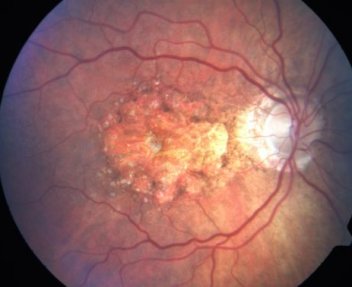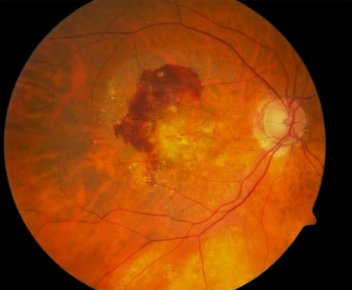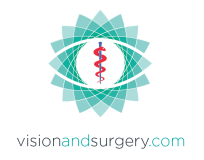AMD
AMD or Age-Related Macular Degeneration is the most common cause of vision loss in the over 50s. With age, the macula - central part of the retina responsible for detailed vision - can begin to break down, causing blurred vision. There are two main types of AMD, being Wet and Dry.
What are the symptoms?

Dry AMD, which accounts for around 90% of all cases, causes the cells of the macula to break down slowly. Symptoms gradually worsen, particularly slight blurring of the central vision or difficulty when reading. Dry AMD generally affects both eyes, but vision can be affected more in one eye than the other.
Wet AMD accounts for the remaining 10% or so of all cases and is caused by the growth of abnormal blood vessels in the retina. These new blood vessels leak fluid into the retina and cause distortion of vision and scarring at the back of the eye. Symptoms of Wet AMD include sudden loss of vision or straight lines suddenly appearing wavy or distorted. Anyone noticing these symptoms should seek attention immediately since timely treatment may help restore or maintain vision.
What are the treatments?
At present there is no specific treatment to reverse the damage, or to provide a cure for Dry AMD. Preventative measures, tackling the risk factors for AMD, is the primary focus. Treatment for Wet AMD has been transformed by the development and application of injection therapies, known as Anti-VEGF, and performed since 2005 in the UK. Now with a realistic prospect of visual improvement, this treatment helps to slow down vision loss and in at least one third of cases may improve sight significantly. The treatment works by blocking VEGF (Vascular Endothelial Growth Factor) a protein that stimulates formation of new blood vessels.
 You suitability for treatment will be assessed by direct visualization of the retina and an OCT scan. Lucentis or Avastin injections are the two main agents used in current practice with the addition of a more recent drug, Aflibercept. Monthly injections are given for the first three months followed by further injections if necessary. In the majority of patients up to 40 per cent improvement in vision is anticipated. If vision is permanently lost, you may be eligible for LVA clinic assessment and CVI registration. Please see the relevant section.
You suitability for treatment will be assessed by direct visualization of the retina and an OCT scan. Lucentis or Avastin injections are the two main agents used in current practice with the addition of a more recent drug, Aflibercept. Monthly injections are given for the first three months followed by further injections if necessary. In the majority of patients up to 40 per cent improvement in vision is anticipated. If vision is permanently lost, you may be eligible for LVA clinic assessment and CVI registration. Please see the relevant section.




